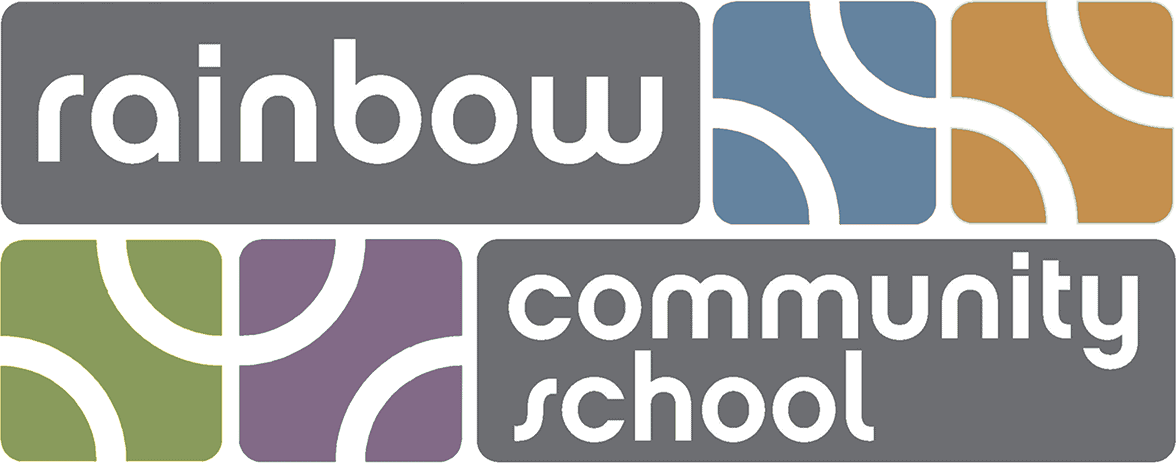
by Cynthia Calhoun | Aug 27, 2019 | Home Page News
Collaboration and Renewal
Collaboration and Renewal: two key words that describe what it is for faculty to come back together for ten days of training before the start of school.
Faculty and staff began their August workdays with something that is so integral to Rainbow: Centering and an Opening Ceremony. The next few days were filled with division meetings, team collaboration time, and safety training. They delved into the their goals and intentions for the year, working with Dyad partners, themes in equity, and more. Reneé led an incredible training around this year’s theme: Wholeness.
The Path of Authentic Learning
Reneé’s training about wholeness is part of a year-long training series that she is offering the staff entitled, “The Path of Authentic Learning,” which is based on her doctoral research. All RCS staff learned about strands in “an educator’s model for spiritual development” and “teaching as a spiritual practice.” They explored “the field of connection” and the idea of vulnerability – both with the student and the teacher, tied in with authentic learning. They had a chance to do some journal reflections throughout their training days.
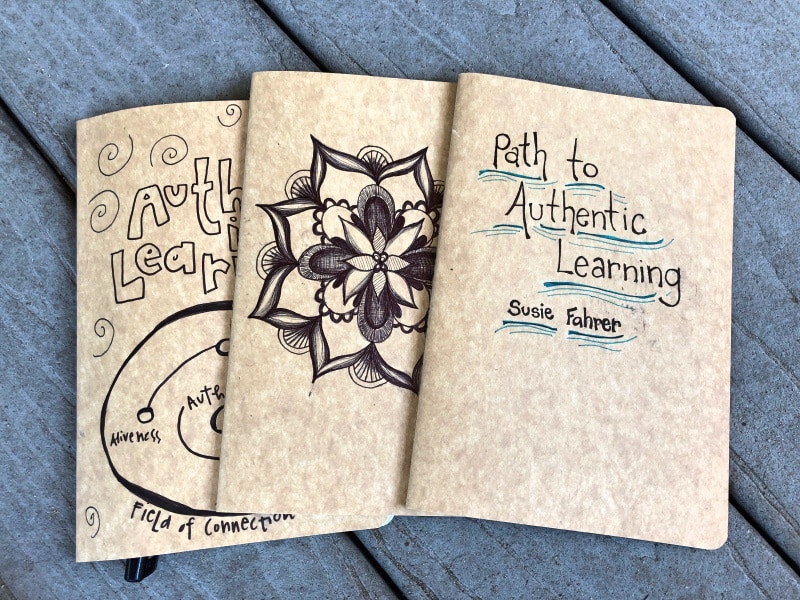
Reflection journals
Continuing collaboration and renewal in Hot Springs, NC
It was with that theme, and with this new knowledge, that all RCS staff embarked on an overnight retreat in Hot Springs, NC. They had a chance to engage in additional trainings that would benefit the classroom. They engaged in nature games that involved all the senses, positive discipline, and a module about “aliveness.” Staff investigated topics like awakening the senses, infinite learning, imagination, and even Oneness.

Positive Discipline training, led by Eddy and Josie
To be sure, all community members had a chance to go to the hot tubs, camp in a tent, or stay in a rustic cabin. They enjoyed fellowship and visiting with each other after summer break. In fact, every moment of these training days was intended to create a sense of wholeness and groundedness. That helped prepare everyone for a new school year.

Time in nature and participating in Restorative Circles was another component of the retreat. So many mentioned how sights of the forest, the running river, listening to the cicadas, and taking in the earthy scents of surrounding trees were incredibly uplifting and healing. They paired that with communicative circle activities in which folks shared about their “authentic self.” This was a path to forging vibrant, lifelong friendships built on a solid foundation.
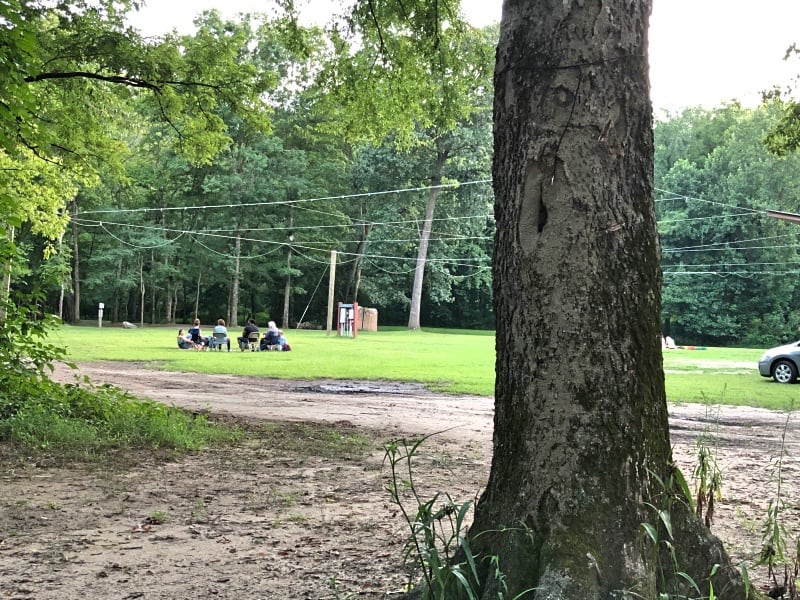
Restorative Circles
Getting ready
The overnight retreat ended with Closing Circle, in full practice of the year’s “wholeness” theme. Everyone stood together, at times holding hands, sharing in song and in moments of vulnerability. This concluded with a final sounding of the singing bowl. Now, they were almost ready. With this session of renewal came the energy to return to campus. Teachers finalized their first-week lesson plans. They put the final touches on decorating their student-centered classrooms. Still, they arranged desks and furniture just so, printed out any necessary materials AND….
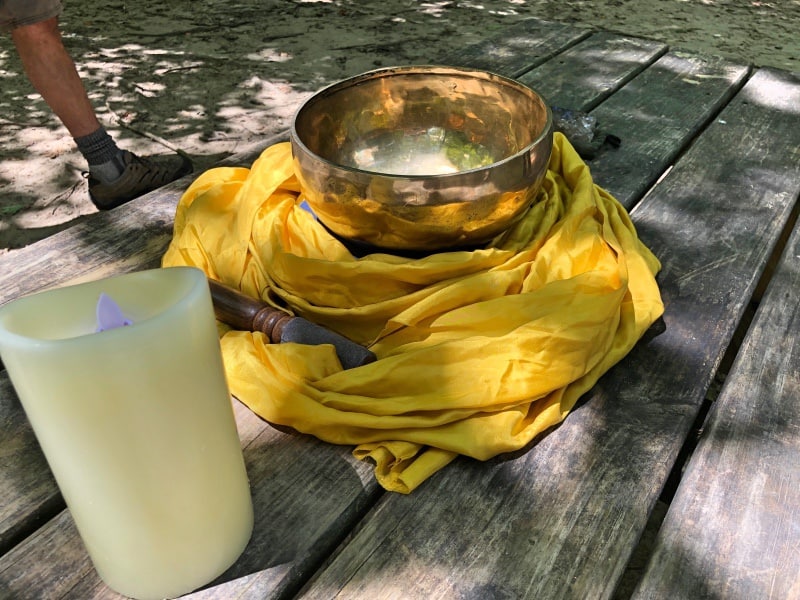
The singing bowl at Closing Circle
The first day of school began. It promised to be the best year ever!
Photo credits: Cynthia Calhoun
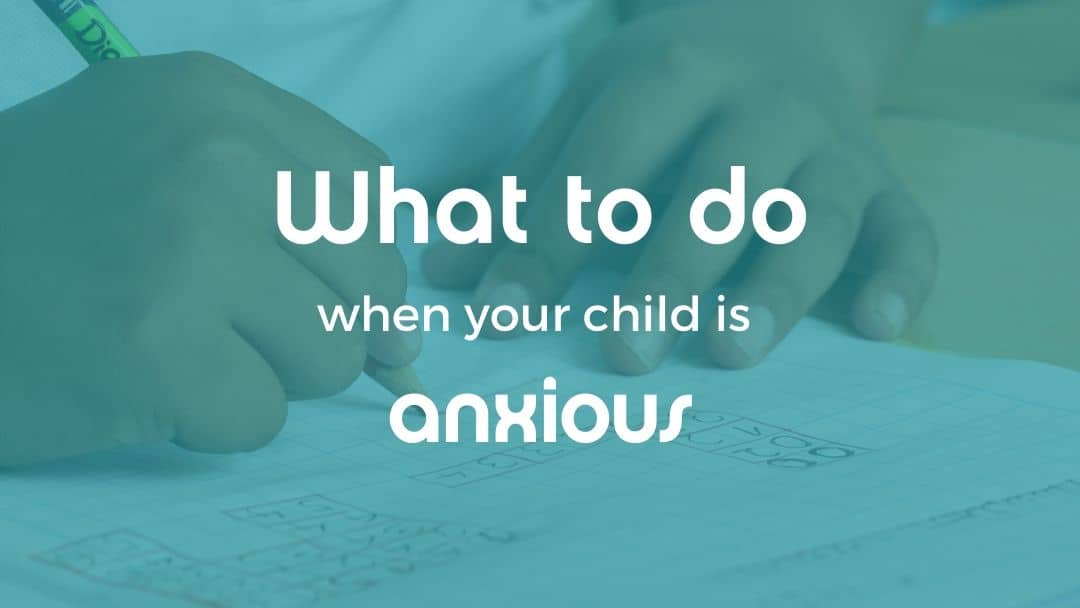
by Renee Owen | Apr 26, 2019 | Director's Blog, Home Page News
When your child is anxious

In the two decades I have been in education, it has been alarming to watch the levels of anxiety increase in children. Child anxiety has become widespread, often crippling youngsters of the self-assuredness they need to be happy and successful in life. But there is good news. Doctors at Yale Child Study Center think they might have a “cure,” and it begins with parents.
Take a look at this NPR article:
For Kids With Anxiety, Parents Learn to Let Them Face Their Fears
This story from NPR provides a brief look into this new program at Yale that is having demonstrable success by working with the parents of anxious children, rather than with the children themselves. The story investigates one particular family who was struggling with anxiety. The family’s son learned that he can tolerate anxiety through facing his fears. Alternatively, the typical method would have been for the child to attend therapy. Not only can this add a layer of discomfort for any child, but if they are coming home to anxious parents or parents who continue to try to shield their children from discomfort, that would negate the positive effects of therapy. The Yale program has a completely different approach: to only counsel the parents. Parents learn how to ensure their child feels heard and loved, but also learns resilience.
Everyone wants their child to be happy. Rainbow Community School is truly a place of joy, but it is also a very REAL place. As much as we would love to protect every child from hearing hurtful words, being excluded from friendships, engaging in work that feels too challenging, dealing with grief, or sustaining physical injuries – all those things happen here. For example, almost every child hits a point in their education where they don’t want to come to school. Sometimes they are experiencing anxiety that they may not be able to fully articulate. It could be that another student was unkind to them. Perhaps they were absent one day and when they returned to school they felt behind and lost, creating discomfort and dread. Whether this lasts for a few days for a few years, it is heartbreaking for parents, especially at a school like Rainbow. It can be difficult for well-meaning parents to imagine anything other than joy.
The secret is to remember that true joy goes much deeper than emotions. Feelings of happiness, sadness, anger and bliss go up and down with our life’s circumstances. We have good days and bad days; but true joy is a way of being. True joy lies in the ability for us to move toward conflict with compassion, knowing we have the strength and wisdom to flourish. For children with anxiety, moving toward conflict is especially challenging, but ultimately prove successful.
Anxious child, anxious parent
In the two decades I have been a school leader, I have seen many trends. One positive trend is the decrease I have witnessed in autocratic parenting. Simultaneously, there has been an increase in parents using connection and compassion instead of fear, guilt, and other punitive measures. However, many parents find that balancing a desire to be compassionate while building responsibility and resiliency in their children can be a challenge. One way to address this is to draw clear boundaries and require children to do things they are afraid of or that they find uncomfortable. This is in line with what the Yale Child Study Center has found. Shielding children from discomfort is fueling an epidemic of anxiety.
When we protect our children too much, or when we jump in to defend them, or to solve their discomforts or issues we can inadvertently send the message that they are not capable. This can cause tremendous anxiety, as the child’s world feels out of control if they don’t sense they have the capacity to move through problems on their own. When a child comes home upset, they can sense if their parent is anxious about their unhappiness. Like a contagion, this anxiety can grow for each family member. However, if the parent is calm and caring, using statements such as, “I’m sorry, that must be so scary. What did you do to get through that?”, it builds the child’s sense of self-efficacy. These can be challenges that last for many months, and can feel like a lifetime to a child, or even to parents. But every time a problem improves – however gradually – or goes away, children learn they are able to endure. They learn through experience that this, too, shall pass. They begin to understand that joy is something inside them, and rely less on their external circumstances.
We live in an anxiety-producing world, and we all land somewhere on the spectrum of anxiety. Some have high anxiety and some have lower levels. What’s important is that parents recognize anxiety in themselves and their children for what it is – without judgment, without shame – so that they can move toward finding balance.
Ivy League Universities are naming anxiety and mental health issues as the biggest problems they now face with students. Admissions processes are changing to look for students who have a secure sense of social and emotional well-being.
At Rainbow, we want every child to be truly prepared for their future. That’s why social and emotional learning are integral to our 7 Domains program. If you think your child is anxious, we are also here to meet you with love, care, and comfort. You can always speak with your child’s teacher(s) and ask for honest practical advice on how to approach your parenting. Also, Will Ray and our counseling team are trained in best practices and here to help. All you have to do is ask, and remember you are not alone.
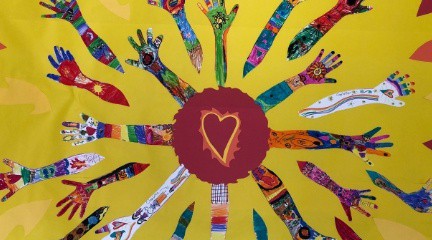
by West | Oct 23, 2018 | Blogs, Home Page News, Rainbow Institute
In 2012 Rainbow Community School (RCS) was selected as an Ashoka Changemaker School, a network of schools that empower students as changemakers by prioritizing empathy, leadership, and collaborative problem-solving as student outcomes. They recognize the capacities of young people to make a BIG difference and highlight empathy as the centerpiece for all changemaking efforts. RCS was nominated as a changemaker School because of its belief that educating for the wholechild directly impacts humanity’s collective awareness and capacity for growth.
The Journey from I to We:
Gandhi’s wise words remind us that it all begins with our inner selves: “Be the change that you wish to see in the world.” At RCS, we believe that real change originates out of an individuals’ commitment to their own evolution. As a result, we strive to support all learners in becoming whole, finding purpose and then making change. Our educational model nurtures the holistic development of the child and by doing so, these whole humans are better equipped and more empowered to serve the needs of humanity and the planet through their positive change making efforts.
It is not uncommon for our learners to acknowledge that before they can show up for others they must show up for themselves and it is the emphasis on self-discovery and personal well-being that opens the doors to connection, collaboration and thus meaningful work. Our students explore, at a very young age, what it means to “know thyself” by recognizing their unique gifts and exploring practices that highlight self-empathy and self-gratitude.
By inviting a child’s inner life into the classroom we are awakening their spirit. A spiritually nourished child is not only ready to learn but it’s the child’s strong spiritual identity that is the catalyst for meaningful work. The catalyst for change!
There are certain stand out elements of the Rainbow Seven Domains Learning Model that help to create favorable conditions for spiritual identity development and the daily centering practice is one of them. This morning ritual serves to awaken the spiritual center of each child, opening pathways to learning. As a centering begins, the classroom is filled with ritual and reverence. These rituals vary from classroom to classroom but the essence of centering is such that the students gather in a circle on a rug, the space is set with intention, the lights are dimmed, a chime or bell invites silence, reverence fills the room, a pause is taken for audible breath work, the invitation of fire through candlelight is summoned- this begins the sacred work of the day. The results are often a harmonious learning environment in which focused thinking come naturally, trust among the group yield effortless work and innovative solutions are manifested.
Recently I joined Lucy and the preschool Dragonflies for centering. The preschool centering ritual leader began by asking his class to put on their mindful bodies and their mindful listening ears. He then told them that he would ring the singing bowl and wanted every person to actively and mindfully listen until they could no longer hear the song of the bell and then to raise their hand when its song was gone. He then used a breathing ball and guided his classmates in three deep inhales and exhales. As the ball expanded he said aloud “inhale” and as it contracted he said “exhale.”
Lucy, then invited the preschoolers to join her in a self-affirming morning verse that was paired with sign language. The kids spoke the words with confidence and enthusiasm… “May I be healthy, may I be strong, may I be happy, may I be peaceful.” I was happy to witness the use of self-affirmations with such young learners. Positive affirmations or positive self-talk are great motivators for self-reflection and self-change. Statements such as these can easily become identity statements. Thus, benefiting not only oneself but those that you interact with.
Lucy deepened the experience by extending the lesson. She went on to explain that each person would have the opportunity to choose a kind wish they have for themselves. She showed and read the kind wish cards aloud and asked to kids to be thinking about which kind wish they wanted for themselves today. When the kids were ready to share, they signaled to Lucy by placing their thumbs on their knees.
She invited each them to approach the altar which was filled with the kind wish cards, candles and the wishing water. The kids were asked to speak their kind wish aloud and in the direction of the wishing water. It was obvious that Lucy had worked hard to create a supportive and safe yet vulnerable space for the Dragonflies as each child spoke, the rest of the group held a quiet space.
Finally, Lucy reminded the children that much like plants need our care to thrive, our intentions and affirmations need that attention too. As the centering practice came to a close, she explained, that she would take the wishing water (filled with their wishes) and send the kind wishes in to the world by watering the plants and that the plant’s health and growth will be a visual reminder of our own personal growth.
If we feed our body, it can grow. If we feed our mind, it can be stimulated. If we nurture our spirit, it can flourish. What daily affirmations will help you flourish?
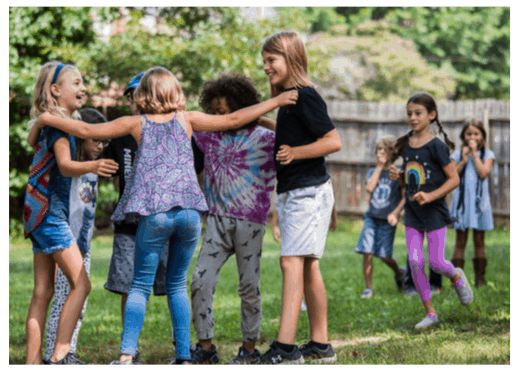
by West | Oct 23, 2018 | Blogs, Home Page News, Rainbow Institute
Connection and community at Rainbow is often nurtured through rituals, traditions or celebrations that mark the passage of time. We begin the school year with an opening ceremony during which the entire school comes together to offer blessings and intentions for the coming year. On that same day we also host a Rose Ceremony. This ceremony happens twice each year; on the first day of school and on the last day of school.
The ceremony on the 1st day of school is designed for the oldest students (8th graders) in the school to welcome the 1st graders into elementary school. Each 8th grader gives a 1st grader a rose to symbolize their support as they transition. This important rite of passage is replicated on the last day of school as the 8th graders graduate. The 1st graders offer them a rose to mark their transition.
Also during the first week of school, each class chooses a mascot. Choosing a class mascot has been a community building tradition at Rainbow for years. This tradition yields many benefits. Students are using the mental domain to formulate logical arguments about their mascot choice, the social domain to share their ideas and participate in a democratic voting process, the spiritual domain by learning about symbolism of the mascot and/or striving to embody the qualities of those animals. The mascot provides the class a shared identity and deepens group cohesion.
We also gather for a weekly song circle. This is a simple and joyful way to engage in the universal language of music while also offering a special bonding experience across the age groups.
Additionally, throughout the course of the year, we hold fire circles that help us honor the seasonal cycles and our own inner cycles. The circles foster a support system for deep reflection, invite gratitude and, nurture the well being of all community members who attend. As we gear up for the Fall equinox, a fire burns on campus, extending the invitation to sit, to breathe and to connect.
These are a few of the community connection opportunities offered in the first few weeks of school. We invite you to find ways that integrate modified rituals such as these in your home, classroom or organization.
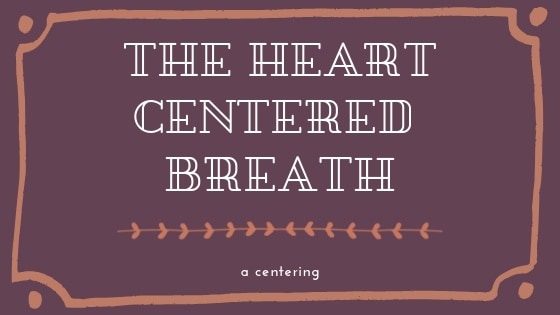
by Cynthia Calhoun | Sep 25, 2018 | News
Opening the Heart – Reflection and Centering
At a recent admin meeting, Cynthia shared a centering designed to bring awareness to, and open the heart. Renee asked her to share it on the Director’s Blog for others to enjoy, as well.
Point to yourself
Take a moment to close your eyes and relax into the rhythm of your breath. When you feel more relaxed, go ahead and point to yourself.
Notice where you are pointing. Chances are, you’re pointing toward your heart, or somewhere near your heart chakra.
This is on purpose. We humans point to the heart because we intuitively know our truest selves are not the brain, but the heart. The heart serves as a secondary brain and even has its own magnetic field.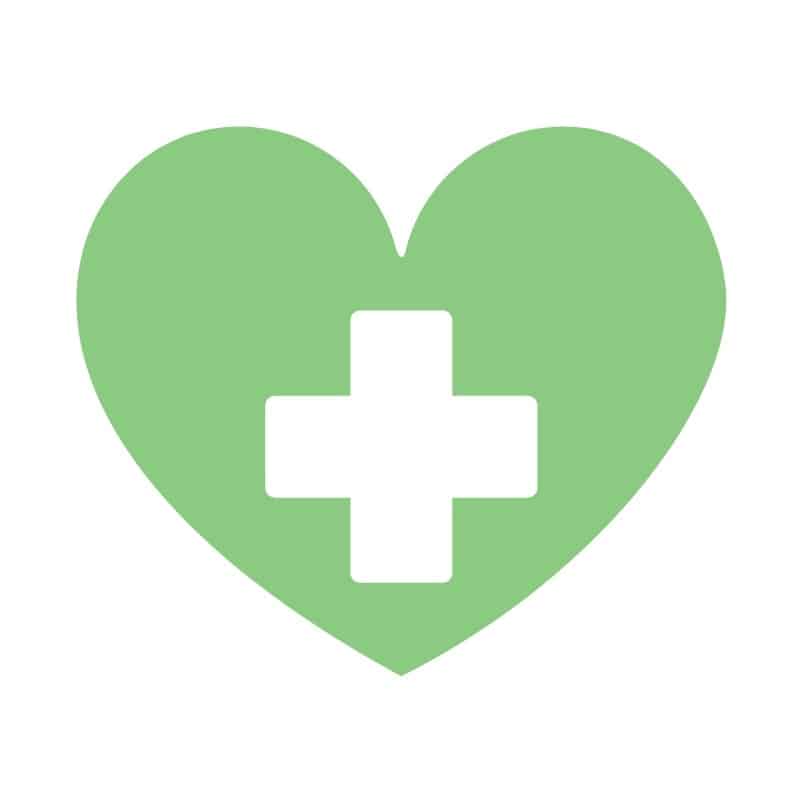
What we do with the heart
We do a lot with the heart. We have heart-to-heart conversations. When we’re happy, our heart swells. When we’re sad, we’re heartbroken.
In the presence of beauty, we say we’re heartened. When we like someone, we say that they have a kind heart. A trustworthy, well-meaning person has a heart of gold. Conversely, a cold, unforgiving person has a heart of stone. When we feel bad for someone, we say, “bless their heart.” When we experience surprise, our heart skips a beat.
When we see someone’s heartfelt actions, we know it’s them expressing their truth. Furthermore, we send heart emojis when we mean to send loving thoughts.
Some of us wear our hearts on our sleeve.
Caring for our “heart self”
Our culture values the relentless pursuit of knowledge. We feed the mind. We feed the brain. We spend decades educating ourselves. But how often do we remember to feed the heart? How often do we remember to care for our heart self?
When we focus on the heart, our communications improve. Our relationships flourish. Still, our hope for the world turns rosier, as if we put on rose-colored glasses.
Pink and green
The color pink is the representation of the heart and a symbol of romantic love. On the other hand, the heart chakra is green. It’s the opposite of rose. Green is a color of expansion, growth, openness and unconditional love – love for self and love for others. The heart chakra sits in the center of the chest, not at the heart as many believe.
As a centering, we can do a little care for the heart – the heart itself, and the heart chakra.

A heart-centered breath
This is a practice that you can do at any time: while going about your day, while meditating, while exercising, or wherever.
Sit with your feet flat on the floor, or in a comfortable position. Hands can rest on your lap.
Relax your body. You can keep your eyes open, capped (open half-way) or closed.
Bring your attention to the breath as you breathe through the nose. Feel the cooler air as you inhale, and warmer air as you exhale. Don’t control or regulate your breath. Just observe.
Focus your attention…
Now bring your gentle attention to the rise and fall of the chest. Gently move your attention to the heart. Visualize your breath moving in and out of your heart space, filling it with soft green light and exhaling that same green light into the air around you.
Move into silence for three or four breaths, with each inhale and exhale taking in the easy green light and filling your heart space. Your exhale fills the air with this same light.
If you notice your thoughts wandering, just bring them back to the heart, and the light. Be kind to yourself.
After a few moments, bring your attention back to the breath. When you’re ready, open your eyes if you had them closed or capped.






